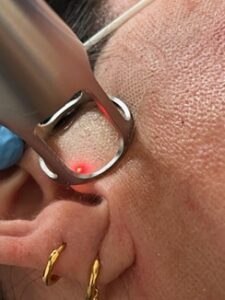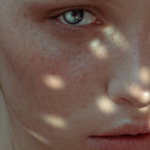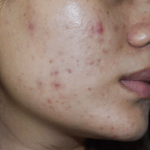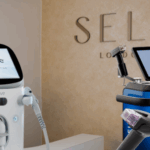
By the end of summer, most skin tells its story. Months of light and heat leave behind fine lines, irregular pigment, and a surface that no longer reflects light evenly. The effects are often subtle, a dullness, a loss of elasticity, a roughness that no amount of moisturiser seems to fix, but they are cumulative and entirely predictable. Autumn, with its softer light and cooler air, offers a pause: the most forgiving season in which to repair what summer has left behind.
This is the moment when the skin becomes ready for renewal. Temperatures drop, UV levels fall, and the barrier begins to recover from the constant stress of sun, sweat, and travel. It is also when the physiological conditions for deeper repair such as collagen formation, controlled inflammation, and balanced healing, are most favourable. For this reason, autumn has long been the preferred season for laser resurfacing.
Among the new generation of devices, UltraClear, a 2910 nm fractional laser, represents one of the most precise tools for restoring clarity and texture with minimal downtime. The logic behind treating the skin now, rather than later, extends far beyond convenience and rather is both biological and environmental.
The skin after summer
Sunlight is both essential and destructive. Even moderate exposure increases melanin production and accelerates the breakdown of collagen and elastin, the proteins that keep skin firm and supple. Ultraviolet radiation generates reactive oxygen species that weaken the dermal matrix and interfere with repair. Heat, humidity, and sunscreen residue thicken the outer layer of the epidermis, a form of self-defence that, over time, dulls radiance and slows turnover.
By October the result is skin that looks tired rather than tanned. The surface is uneven, pores seem more visible, and tone less even. These are not superficial changes; they are signs of barrier fatigue and collagen depletion. The skin needs a form of structured renewal, one that removes damaged cells while stimulating deeper regeneration.
How the UltraClear laser works

UltraClear is a fractional laser, which means it delivers energy through a grid of microscopic columns rather than treating the entire surface at once. Each pulse creates a zone of controlled renewal surrounded by untouched tissue. The intact skin acts as a reservoir of healthy cells, allowing faster recovery and stimulating collagen production beneath the surface.
What distinguishes UltraClear is its wavelength. Operating at 2910 nanometres, it targets water, the main component of skin tissue, with remarkable precision. This allows it to vaporise damaged cells cleanly while leaving surrounding structures intact. The result is an extremely fine layer of renewal, minimal heat spread, and faster healing.
Older resurfacing lasers, particularly CO₂ systems, worked through broader thermal injury, which prolonged redness and recovery. UltraClear’s controlled energy delivery makes it possible to resurface skin with far less downtime while still triggering significant collagen remodelling. The treatment can be adjusted from a light, luminous “laser facial” to a deeper resurfacing for acne scars, wrinkles, or sun damage, making it versatile yet predictable.
The seasonal logic
Autumn provides the perfect environmental conditions for healing. Ultraviolet levels decline, daylight hours shorten, and the air cools, all factors that reduce the risk of post-treatment pigmentation and inflammation. Cooler temperatures also mean capillaries remain stable, limiting swelling and flushing. The first weeks after laser treatment are when the skin is most vulnerable to UV damage; performing resurfacing at this time of year, rather than peak summer makes compliance with protection infinitely easier.
Humidity also plays a role. In early autumn, the air retains enough moisture to support barrier repair without the extreme dryness caused by central heating. Performing resurfacing too late in winter can prolong recovery slightly, as dry air accelerates water loss from healing skin. Timing a treatment now therefore takes advantage of a brief window of environmental balance: low sun, mild temperatures, and moderate humidity.
The physiology of seasonal repair
The skin’s rhythm changes with the seasons. Sebum production peaks in summer and begins to fall in early autumn. Microcirculation in the dermis also declines as the body conserves heat. These shifts make the skin more receptive to treatments that restore its barrier and rebuild collagen. Performing fractional resurfacing now strengthens the structure before winter’s dryness begins to test it.
At the same time, collagen synthesis, the process of building new structural protein, is steady through cooler months. The controlled injury caused by fractional laser treatment activates fibroblasts, the cells responsible for collagen production. Over the next several months, these cells produce new, well-organised fibres that gradually thicken and strengthen the dermis. When performed in autumn, this process unfolds quietly through winter, producing visible improvement by spring.
The psychological rhythm
There is also a behavioural rhythm to autumn. After the intensity of summer, routines return and people spend more time indoors. Diet and sleep patterns stabilise; social commitments ease. This quieter pace creates the ideal context for recovery and consistency, the two conditions under which the skin heals best.
Many people experience autumn as a period of recalibration. It invites the kind of care that is reflective rather than reactive. Choosing to treat the skin now feels aligned with that rhythm: a moment to rebuild, strengthen, and prepare for the year ahead, rather than simply react to surface concerns.
What UltraClear helps to address
Uneven pigmentation
Sun exposure leaves small clusters of pigment cells active long after summer ends. UltraClear gently removes discoloured surface cells and encourages more even melanin distribution in the basal layer, helping fade sun spots and blotchiness.
Texture and fine lines
Collagen degradation causes fine creases and roughness. By stimulating new collagen formation in the dermis, UltraClear restores elasticity and a smoother surface, particularly around the eyes, cheeks, and mouth.
Acne scarring and pores
The laser’s microscopic heat columns reach beneath scars, prompting collagen to rebuild from within and gradually lift depressions. The surface becomes more even, pores less visible, and tone more uniform.
Loss of radiance
By removing compacted dead cells, UltraClear restores the smoothness needed for light to reflect evenly. The improvement in luminosity is often visible within days, with deeper structural changes developing over time.
Preparing the skin
Healthy skin heals predictably. In the weeks before treatment, maintaining hydration and barrier strength is essential. Daily sunscreen use, antioxidant serums, and a gentle moisturiser prepare the skin’s defences. Those prone to pigmentation may benefit from a mild pigment-regulating serum to calm melanocyte activity. Avoiding harsh exfoliants or retinoids a few days before treatment ensures even energy absorption and reduces irritation.
The treatment and recovery
An UltraClear session typically takes between twenty and forty minutes depending on area and intensity. The skin is cleansed and, if needed, a topical anaesthetic applied. During treatment, patients may feel a gentle warmth or tingling. Immediately after, the skin appears flushed and feels warm, similar to mild sun exposure. Over the next few days, faint bronzing and fine flaking occur as new cells emerge. Most people resume normal routines within three to five days after a lighter treatment and about a week after a deeper one.
Healing is not the end of the process but the beginning of renewal. Beneath the surface, fibroblasts continue building collagen for several months. The skin gradually becomes firmer, clearer, and more uniform.
Aftercare and long-term gain
Post-treatment care focuses on hydration and protection. Using a gentle, fragrance-free moisturiser keeps the surface comfortable as the barrier reforms. Cleansing with tepid water prevents irritation, and daily SPF 50 is essential, even under grey skies. Internally, hydration and nutrition support recovery: omega-3 fatty acids, vitamin C, and zinc all contribute to collagen repair.
Unlike procedures that promise instant results, UltraClear works in harmony with the body’s natural timelines. Improvement is progressive and continues quietly for months. This is why performing it in autumn, when the skin and environment are both conducive to repair, feels less like intervention and more like alignment.
The broader philosophy
Modern dermatology increasingly recognises that timing matters as much as technique. The best outcomes occur when treatments are matched to physiological and environmental conditions. Autumn sits at that intersection, when the skin is calm, UV is low, and the pace of life slows enough to allow recovery without disruption.
The goal is not transformation for its own sake but restoration of balance: clearer tone, smoother texture, and a stronger foundation for the months ahead. When the skin is treated in rhythm with the season, results appear more natural and endure longer.
The takeaway
Laser resurfacing remains one of the most effective ways to renew the skin’s surface and stimulate deeper repair. The UltraClear 2910 nm laser combines precision with safety, offering measurable improvement in texture, tone, and radiance with minimal downtime.
Autumn provides the perfect backdrop for this renewal: a convergence of physiology, environment, and behaviour that supports true healing. It is the time to strengthen the barrier, rebuild collagen, and restore equilibrium after the exposure to summer.
In intelligent aesthetics, timing is not incidental; it is integral. Choosing to renew the skin now, when it is ready to heal, protected from the sun, and supported by quieter rhythms of life, ensures results that last far beyond a single season.
Book your consultation at our dermatology clinic on Harley Street to begin your Ultraclear laser treatments today.





